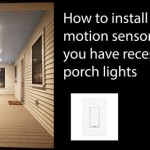Essential Aspects of Outdoor Lighting Design
Outdoor lighting plays a crucial role in enhancing the aesthetics, functionality, and safety of your outdoor spaces. A well-designed lighting plan can transform your backyard into an inviting living area, guide visitors safely through pathways, and deter potential intruders. Here are some essential aspects to consider when designing your outdoor lighting:
Functionality
First and foremost, consider the functional aspects of your lighting. Identify the areas where illumination is needed, such as pathways, steps, seating areas, and driveways. Lighting should provide adequate visibility to ensure safe navigation and prevent accidents. Pathways and steps should be well-lit to avoid tripping hazards, while driveways need illumination to enhance visibility for vehicles and pedestrians.
Aesthetics
Outdoor lighting can also significantly impact the aesthetics of your outdoor spaces. Use lighting to highlight architectural features, create focal points, and set a desired ambiance. Uplighting trees and shrubs can create a dramatic effect, while accent lighting can enhance the beauty of sculptures and water features. Use warm-toned lighting to create a cozy and inviting atmosphere, or opt for cooler hues for a more contemporary look.
Safety
Outdoor lighting plays a vital role in safety. Well-lit outdoor areas deter potential intruders and create a sense of security. Motion-activated lights can illuminate dark corners and discourage trespassers. Lighting along pathways and steps reduces the risk of accidents. Consider using dusk-to-dawn lighting to provide continuous illumination throughout the night.
Energy Efficiency
Energy efficiency is an important consideration for outdoor lighting. Choose energy-efficient lighting fixtures, such as LED bulbs, which consume less energy and have longer lifespans. Use timers or motion sensors to control lighting, ensuring it is only used when necessary. By implementing energy-efficient practices, you can reduce your energy consumption and save on electricity costs.
Layering
Layering different types of lighting creates depth and interest in your outdoor spaces. Combine ambient lighting, which provides general illumination, with task lighting, which focuses on specific areas, and accent lighting, which highlights features and creates dramatic effects. By layering lighting, you can achieve the desired ambiance and meet the functional requirements of your outdoor spaces.
When designing your outdoor lighting, consider these essential aspects to create a beautiful, safe, and functional outdoor environment. By incorporating these tips, you can enhance the aesthetics of your outdoor spaces, ensure safety, and enjoy the benefits of well-lit outdoor areas.

Outdoor Landscape Lighting Design Tips Ideas Environmental Designs

Designing A Landscape Lighting System Ideas Advice Lamps Plus

Landscape Lighting Design Overview

Outdoor Landscape Lighting Design Tips Ideas Environmental Designs

Designing A Landscape Lighting System Ideas Advice Lamps Plus

Expert Outdoor Lighting Design Tips 1000bulbs Blog

13 Outdoor Lighting Tips For A Safe And Inviting Landscape

Outdoor Lighting Design Tips Expert Ideas To Brighten Any Space

The Secret To Outdoor Lighting Turney And Electric

How To Buy Outdoor Lighting Planning And Design Tips Ideas Advice Lamps Plus
Related Posts







